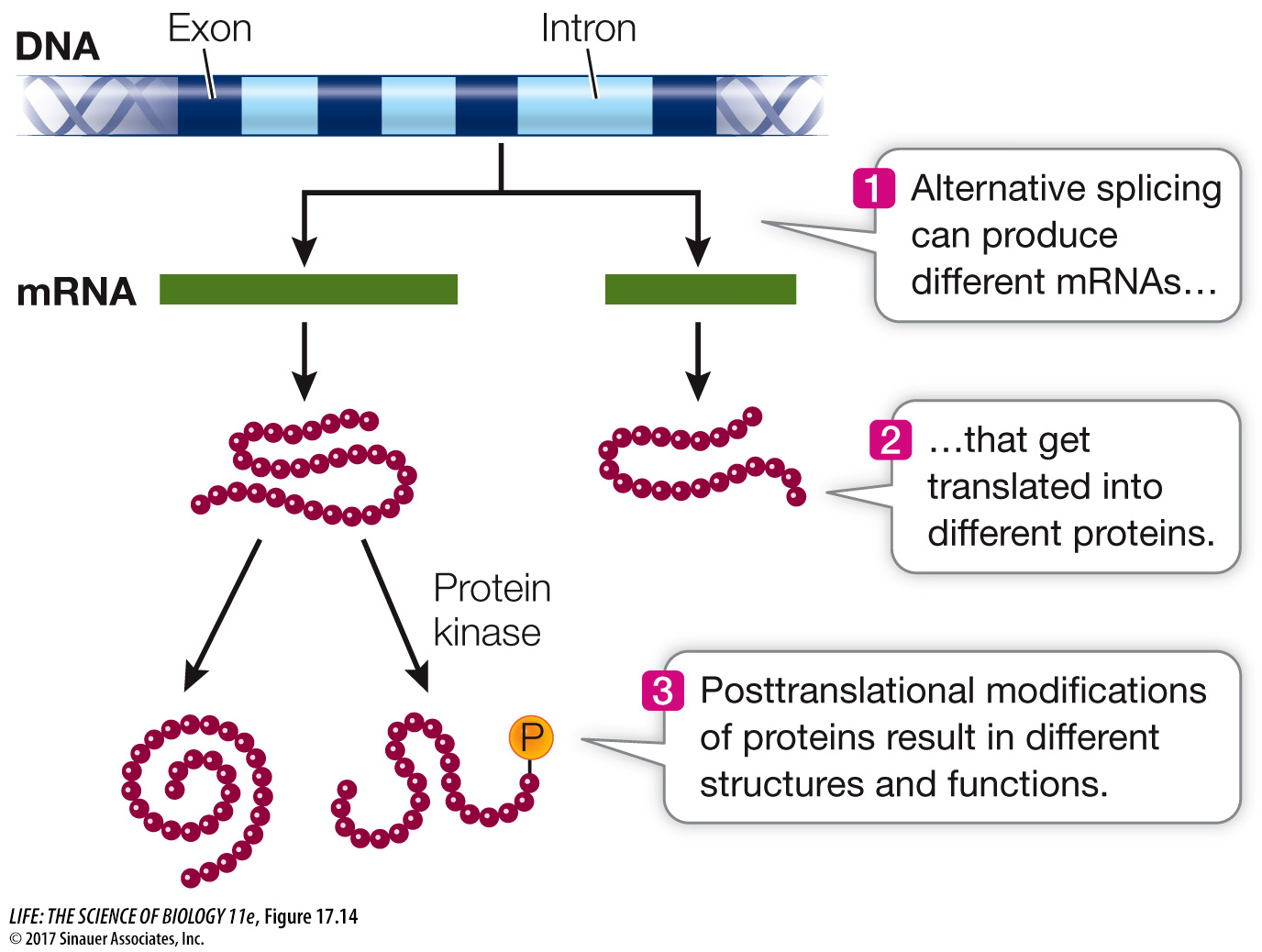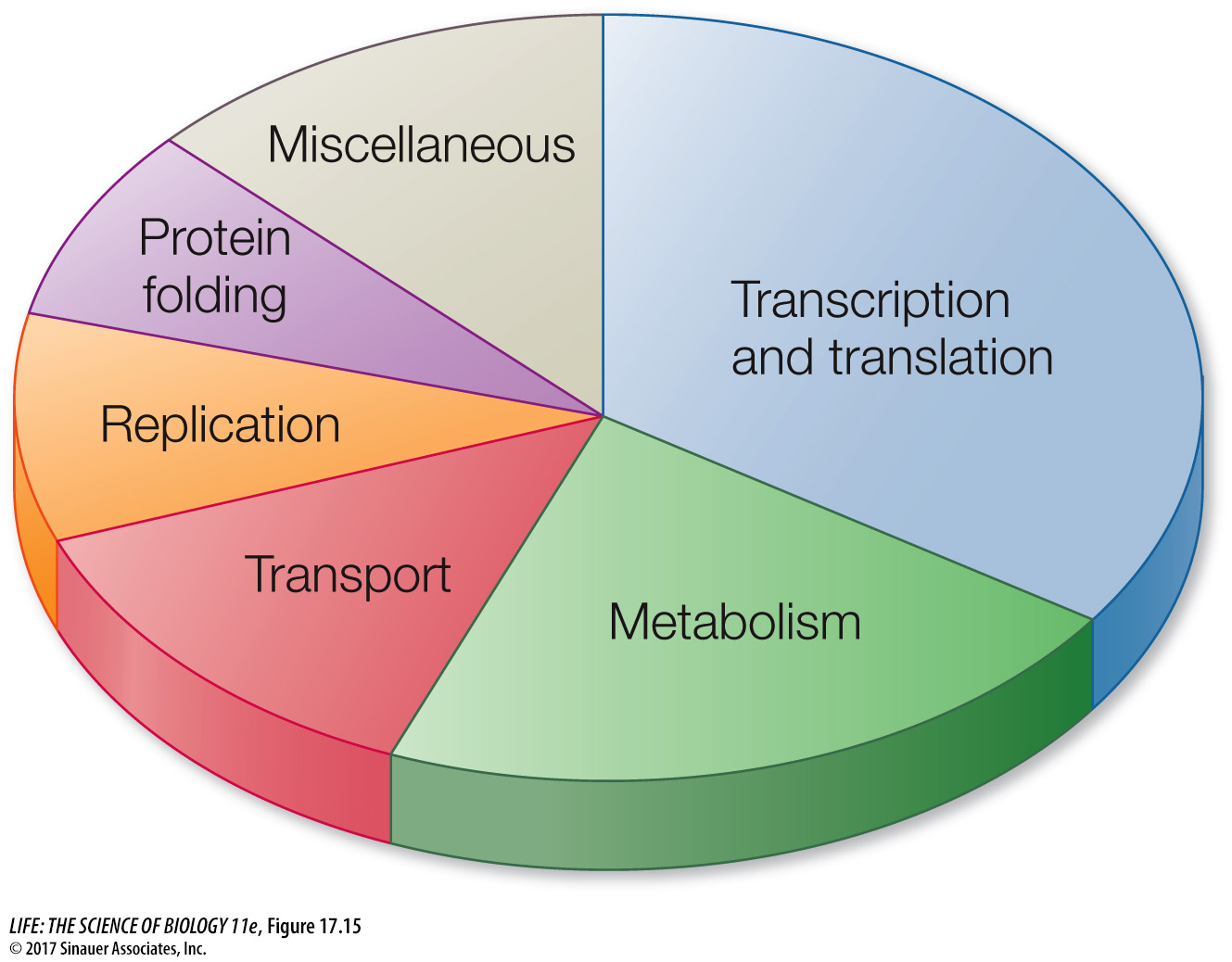The proteome is the complete set of proteins in a cell, tissue, or organism at a given time
As mentioned above, many genes encode more than a single protein (Figure 17.14). *Alternative splicing of a given gene can allow different combinations of exons to be transcribed into the mature mRNAs. Posttranslational modifications also increase the number of protein variants that can be derived from one gene. It should also be noted that in a multicellular organism many proteins are produced only by certain cells and only under specific conditions. Even single-

*connect the concepts Recall from Key Concept 16.5 that different mRNAs can be made from the same gene by alternative splicing, resulting in a family of different proteins, with different functions, from a single gene. Recall also that proteins can be modified in posttranslational processes such as proteolysis, glycosylation, and phosphorylation (see Figure 14.18).
The proteome is analyzed by mass spectrometry, a technique that uses electromagnets to identify proteins by the mass. The ultimate aim of proteomics is just as ambitious as that of genomics. Whereas genomics seeks to describe the genome and its expression, proteomics seeks to identify and characterize all of the expressed proteins.
Comparisons of the proteomes of humans and other eukaryotic organisms have revealed a common set of proteins that can be categorized into groups with similar amino acid sequences and similar functions. When considered on a whole-

There are, of course, many uniquely human proteins in addition to those we share with other eukaryotic organisms. As we have mentioned before, proteins have different functional regions called domains (for example, a domain for binding a substrate, or a domain for spanning a membrane). While a particular organism may have many unique proteins, those proteins are often just unique combinations of domains that exist in other organisms. This reshuffling of the genetic deck is a key to evolution.
Proteins seldom exist in isolation. Most interact with other molecules, such as nucleic acids (e.g., transcription factors and DNA), other proteins (e.g., the respiratory chain complexes in mitochondria), and lipids (receptors in the cell membrane). A major task of proteomics is analyzing these interactions.